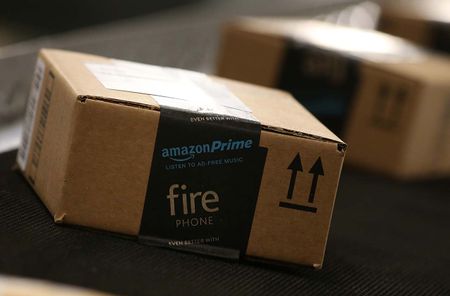The Secret to Spending Less
Follow these steps to avoid the temptation to buy things you really don't need.

Economists view the Commerce Department's report today that consumer spending rose in July as encouraging -- considering consumer spending accounts for about 70% of the nation's economic activity. You might say it's a good thing Americans aren't pinching their pennies quite so much.
Some of that spending came at the expense of saving, though. The personal savings rate as a percentage of income fell to 5% in July from 5.5% in June. Considering many Americans' savings have taken a hit from stock market gyrations or have been drained to help them get through a job loss, it's worth looking at your spending to see whether you need to cut back to boost your savings.
I've found that one of the best ways to reduce spending is to avoid temptation. The fact that I live in a small town probably makes this a little easier for me than for big-city dwellers, who can't walk down the street without passing a multitude of stores, restaurants and entertainment options. (Plus, smaller cities tend to have a lower cost of living -- and in our top ten picks for best value cites, there's a lot to do at affordable prices). But even in the boonies where I am, we still can hear the siren song of daily deal sites, social media and e-mail alerts from retailers.

Sign up for Kiplinger’s Free E-Newsletters
Profit and prosper with the best of expert advice on investing, taxes, retirement, personal finance and more - straight to your e-mail.
Profit and prosper with the best of expert advice - straight to your e-mail.
One of the most well-known daily deal sites, Groupon, doesn't operate where I live. So I've never been tempted by one of its offers for 40% off an hour-long massage (aah, sounds so relaxing) or 50% off an elegant dinner (wow, my husband and I could go on a date!). But my inbox fills up daily with all sorts of offers for deals on clothing, furniture, travel and more.
I signed up to receive some of these e-mail alerts to test them out for this column. However, I get the bulk of these e-mails because I managed to convince myself that by signing up I would be gaining access to great money-saving deals -- when, in reality, I'm just being lured to spend more than I normally would. As Kathy Kristof wrote in Stop Wasting Your Money in the May issue of Kiplinger's Personal Finance magazine, "No matter how much it's marked down, it's not a bargain if you normally wouldn't buy it."
To avoid the temptation to spend or to pounce on deals that really aren't, follow these steps.
Quit the daily deal habit. All it takes to stop tempting yourself daily with deals on things you probably don't need is to hit the "unsubscribe" link at the bottom of the e-mails you receive from deal sites. A friend recently invited me to join a daily deal site for designer clothes, and I did. But after one day, I realized that I didn't need the temptation. So I unsubscribed. I know it's harder to break a long-standing addiction you've had to a deal site. You're thinking: What about all those savings I would be bypassing? Try crunching the numbers first, though, to see how much you're actually spending each month on so-called deals.
Don't give out your e-mail address. Ever notice how the sales clerks at almost every store now ask you for your e-mail address when you buy something? I usually respond by asking, "Do you need it?" The answer is always no. They want your e-mail to notify you of sales and to lure you back into the store to spend more.
Say no to the "spend-more-to-save-more" pitch. Some stores have loyalty programs that reward customers with discounts after they spend certain amounts. At a particular children's store, I often hear that I need to spend another, say, $10 to earn a coupon for $25 off my next purchase of $50 or more. So I'd have to spend at least $35 more just to save $25 ($10 on that day's purchase plus $50 minus $25). No thanks.
Don't "like" retailers on Facebook. Sure, if you "Like" a retailer or establishment on Facebook or follow it on Twitter, you'll be privy to coupons and other special offers. But if you log onto these social media sites daily, you'll be getting constant reminders to buy things you probably don't need.
Stop the flow of catalogs. Those glossy images of well-decorated rooms and well-dressed people can be tempting. Call up retailers you've purchased items from and ask them to take you off their catalog mailing list. And register with the Direct Marketing Association to remove your name from its mailing list to stop new catalogs from arriving.
Get Kiplinger Today newsletter — free
Profit and prosper with the best of Kiplinger's advice on investing, taxes, retirement, personal finance and much more. Delivered daily. Enter your email in the box and click Sign Me Up.

Award-winning journalist, speaker, family finance expert, and author of Mom and Dad, We Need to Talk.
Cameron Huddleston wrote the daily "Kip Tips" column for Kiplinger.com. She joined Kiplinger in 2001 after graduating from American University with an MA in economic journalism.
-
 April RMD? Five Tax Strategies to Manage Your 2025 Income
April RMD? Five Tax Strategies to Manage Your 2025 IncomeTaxable Income The April 1, 2025, deadline for required minimum distributions (RMDs) is fast approaching for retirees who turned 73 in 2024.
By Kelley R. Taylor Last updated
-
 Rising AI Demand Stokes Undersea Investments
Rising AI Demand Stokes Undersea InvestmentsThe Kiplinger Letter As demand soars for AI, there’s a need to transport huge amounts of data across oceans. Tech giants have big plans for new submarine cables, including the longest ever.
By John Miley Published
-
 Five Reasons You Shouldn't Shop on Amazon Prime Day
Five Reasons You Shouldn't Shop on Amazon Prime DaySmart Buying Think twice before getting lured into buying a bunch of stuff you don't need just because it's on sale.
By Andrea Browne Taylor Last updated
-
 Five Ways to Save on Vacation Rental Properties
Five Ways to Save on Vacation Rental PropertiesTravel Use these strategies to pay less for an apartment, condo or house when you travel.
By Cameron Huddleston Last updated
-
 How to Avoid Annoying Hotel Fees: Per Person, Parking and More
How to Avoid Annoying Hotel Fees: Per Person, Parking and MoreTravel Here's how to avoid extra charges and make sure you don't get stuck paying for amenities that you don't use.
By Cameron Huddleston Last updated
-
 Best Cash Back Credit Cards of 2025
Best Cash Back Credit Cards of 2025Credit Cards If you're searching for a credit card that rewards you for everyday purchases, we've chosen the best.
By Ellen B. Kennedy Last updated
-
 How to Spend $1,000: Find Cheap (or Free) Online Courses to Build Career Skills
How to Spend $1,000: Find Cheap (or Free) Online Courses to Build Career SkillsSmart Buying There's a huge array of skill-building online courses that can level up your career for under $1,000.
By Kim Clark Published
-
 MoviePass is Relaunching. Should You Sign Up?
MoviePass is Relaunching. Should You Sign Up?Smart Buying The subscription discount movie card company has a checkered past and an army of disillusioned former cardholders. If you want to try the reboot, you’ll need to hurry.
By Bob Niedt Published
-
 HBO Max Is Offering Huge Discounts
HBO Max Is Offering Huge DiscountsSmart Buying Looking for a streaming service deal? Warner Bros. Discovery is cutting the price of HBO Max.
By Bob Niedt Published
-
 Are You Streaming Too Much? What the Discovery+/HBO Max Mashup Means
Are You Streaming Too Much? What the Discovery+/HBO Max Mashup MeansSmart Buying Fewer original scripted series? Maybe. And maybe it’s time to unsubscribe.
By Bob Niedt Published